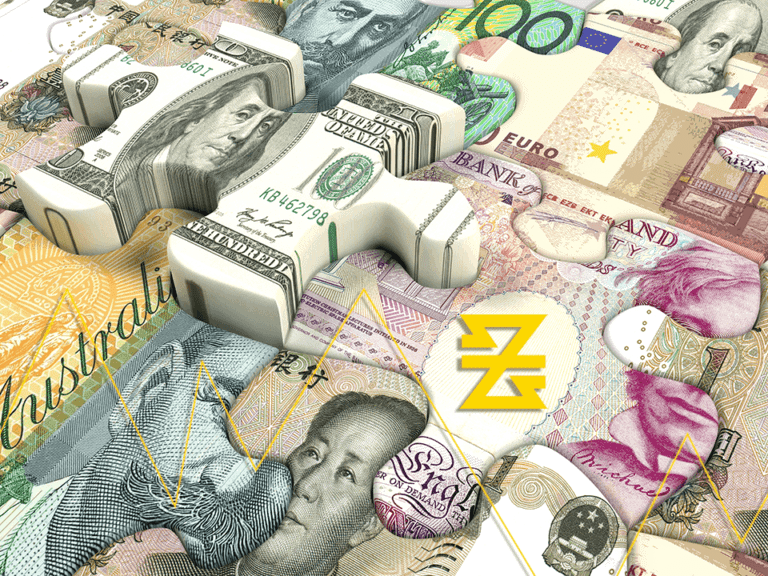- CFDs & Forex Trading | Regulated Online Trading
- About Us
- Trading
- Platforms
- Resources
- Partners
- Research
Search
×

Welcome back to our education center, where we hope to give you all the information you are seeking in a quick and easy read. You are here today looking to learn more about what an exchange rate is. Today we will cover exactly that.
We will start with a brief history lesson.
SHARE THIS ARTICLE:
Many, many years ago individuals directly bartered, exchanging products and services with one another. Yet, as communities grew and individuals lacked knowledge and familiarity of how resources should best be valued, exchanging resources and services with one another became contentious.
So the understanding for establishing a well formulated, medium of exchange became evident. With this need, communities began establishing central currencies as a means for more fairly exchanging assets and resources.

With this understanding, in 1377, England decided to use gold to back their currency. Then in 1720, Isaac Newton more formally established the price of gold to be equal to 84 shillings.
In 1792, another region, the United States, established that one Dollar was valued at 24.75 grains of fine gold. 45 years later (in 1837), $20.67 became equivalent to one ounce of gold. By 1900, the United States had adopted what we know today as the gold standard, where it committed to maintaining a fixed currency standard for exchange rates. This is where we get the term exchange rate from.
In simple terms, the exchange rate is the rate at which one domestic currency will be exchanged for another foreign currency. Also regarded as the value of one country’s local currency in relation to another country’s currency. Here is an example; 10 British Pounds equals 13.19 US Dollars. You can take that information and simply find out that 1 British Pound equals 1.319 US Dollars. And also 1 US Dollar equals 0.76 British Pounds in reverse.
Hopefully now you understand what the bare bones of why exchange rates exist as well as what the term means.
For the purposes of giving you all the information you need about exchange rates, we will dig even deeper into some of the details.
Exchange rates could come in several different types. We will briefly go over each of them. The first type is free floating. A free floating exchange rate rises and falls due to changes in the demand and supply of each currency in the foreign exchange market.
Another type is the currency peg. Here a country will peg its currency to a currency of another country. For example, the Hong Kong Dollar is pegged to the US Dollar. This means the value of the Hong Kong Dollar to the US Dollar will always remain in the specified range.
A widely used type of exchange rate is spot vs forward. The spot exchange rate is the cash value, or in other words, the current market value of any two currencies. Alternatively, you might see a forward exchange rate, and that is referring to the future expectations for the rate to either fall or rise compared to the spot rate.
For such a simple topic, we have covered a fair bit. Everything that has been mentioned today will help you understand more about exchange rates and how they are used. We recommend you continue to grow your knowledge base about everything related to trading by spending more time in our Education Center. We also look forward to you downloading your first demo account with us and placing your very first trade.
Start placing trades with a risk-free demo account
Related Articles
View our collection of free education resources dedicated to help you become a more informed and confident trader.
BAXIA GLOBAL LIMITED
Join the community
Risk Warning: Margin trading involves a high level of risk, and may not be suitable for all investors. You should carefully consider your objectives, financial situation, needs and level of experience before entering into any margined transactions with Baxia Markets, and seek independent advice if necessary. Forex and CFDs are highly leveraged products which mean both gains and losses are magnified. You should only trade in these products if you fully understand the risks involved and can afford losses without adversely affecting your lifestyle (including the risk of losing the entirety of your initial investment). You must assess and consider them carefully before making any decision about using our products or services.
Baxia Global Limited is a company registered in Seychelles with registration number: 8426970-1, and is regulated by the Financial Services Authority of Seychelles with License number: SD104.
Baxia Limited is a company registered in The Bahamas with registration number: 177330 B, and is licensed and regulated by The Securities Commission of The Bahamas (SCB), (SIA-F234).
The information on this website is general in nature and doesn’t take into account your personal objectives, financial circumstances, or needs. It is not targeted at the general public of any specific country and is not intended for distribution to residents in any jurisdiction where that distribution would be unlawful or contravene regulatory requirements. Baxia Markets does not offer its services to residents of certain jurisdictions such as USA, Cuba, Sudan/Republic of Sudan, Syria, Iran, Iraq, South Sudan, Venezuela, Libya, Belarus, Afghanistan, Myanmar, Russia, Crimea, Donetsk, Luhansk, Palestine, Yemen, Zimbabwe and North Korea.